After another week of pretty intensive use of the new Aftershock S17, my summary takeaway is that it’s a machine that’s for the most-part well-worth – and even some part beyond – the very reasonable price paid for it. The machine runs briskly and handles well stuff within my scope of use (daily work productivity, and a bunch of other current 3D video games thrown at it), typing on the keyboard is a real pleasure, and the machine’s brushed metal all-round cover has put up to heavy use well so far. The annoyances I noted in the previous post though – low and weak-sounding output speakers, and a not very bright screen – are still present. The former isn’t a factor if one plugs in headphones and the like, but the latter is something to be really mindful of.
I was big on running computing and 3D benchmarks years ago when I was habitually tearing down my desktop PCs and reassembling new ones a few times each year. Of late though given how long the in-betweens are now when it comes to disassembling PCs (something like once every 2 years only), I rarely run benchmarks to to see how precisely well is a computer performing, outside ballpark intuitive sensing of whether a computer is performing the way it should. So, this post here is really just for fun and not nearly as scientifically conducted as some of the other enthusiast or gearhead sites out there.
Starting off with work/productivity benchmarks, and running the CrystalDiskMark for the Samsung Evo 850 M.2 250GB:
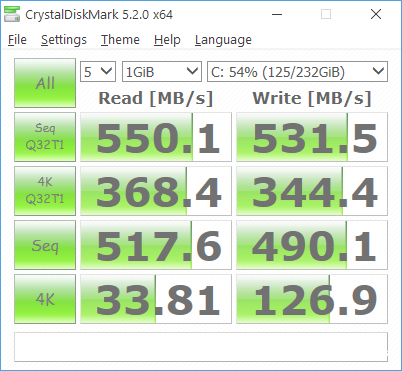
That’s about – in the ballpark – what the Evo 850 churns. Just for fun, here are the ratings for my other two notebooks that I use everyday.
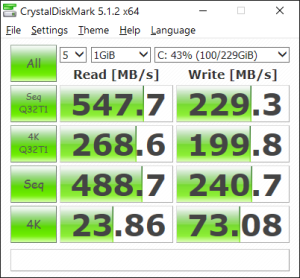
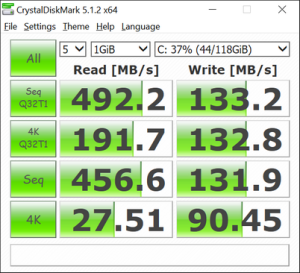

For the 3D benchmarks next; Gsync was switched off, everything else – CPU/GPU performance levels left as they are, and benchmark quality settings set to default:
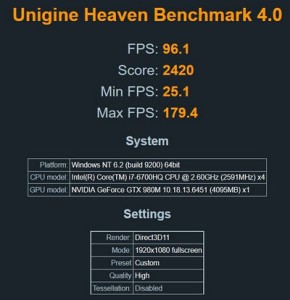
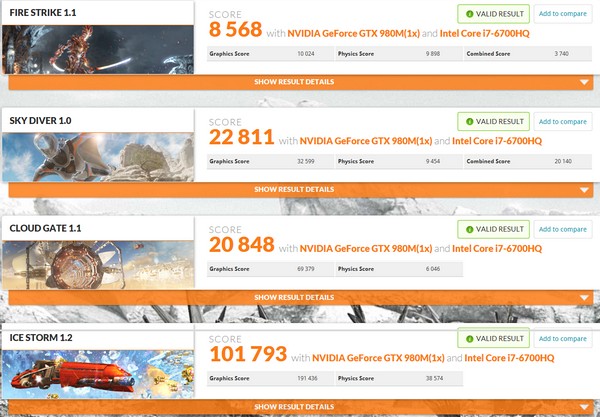
I’m not much of a 3D video gamer as I’m particularly susceptible to bouts of nausea. Typically, 5 to 10 minutes in a first or third person perspective setting is sufficient to induce vertigo, give or take a bit more time depending on other perspective aspects – e.g. motion blur, screen reflections, head-bobbing, frame rate etc. Quite a pity, since until very recently, video game design and development was one of my primary areas at work – and some of the most interesting stuff from a technological standpoint at least is typically in games that deploy first and third person perspectives.
So, it was quite a pleasant surprise that somehow, nausea inducement was less immediate when running and experiencing the same games on the Aftershock S17. A game like the critically acclaimed The Witcher 3 had been sitting in my digital shelf for almost 8 months now. 5 minutes of that on my usual desktop PC with a 27″ monitor would normally be enough to force me to lie down for the next couple of hours. But I’ve been able to – finally – get through longer periods of about 30 minutes per seating on the S17. I’ve been really wondering what’s the reason for it – since the Nvidia GTX960 on the desktop PC can run content as well as the S17’s GTX980m. The only differences I think are the smaller screen on the S17 (17.3″ against 27″) and also that it’s non-reflective. Something to think about!
Recent comments